The blockchain landscape is facing a significant challenge as AI-driven bots increasingly dominate transactions and activities. With nearly half of all internet traffic generated by bots, the integrity of decentralized systems is at risk, prompting urgent discussions on how to maintain human oversight in this evolving digital economy.
Key Takeaways
- Nearly 80% of blockchain transactions are automated, leading to congestion and increased fees.
- AI bots are manipulating decentralized finance (DeFi) markets and driving up gas fees.
- The need for proof-of-human systems is critical to ensure fair access and control over blockchain networks.
The Bot Takeover
The integration of AI bots into blockchain networks has escalated, with these automated systems now accounting for a significant portion of on-chain activity. While some bots serve beneficial purposes, many are involved in malicious activities such as airdrop farming and the creation of fake accounts. This has resulted in network congestion, increased transaction fees, and a monopolization of resources.
The impact of bots extends beyond blockchain, threatening traditional financial systems as well. Recent reports indicate a 55% increase in distributed denial-of-service (DDoS) attacks against financial institutions, fueled by AI-driven botnets. If left unchecked, these automated systems could undermine the foundations of financial transactions and management.
The Scalability Dilemma
Efforts to address the challenges posed by bots have primarily focused on scalability solutions, such as layer-2 technologies and rollups. While these innovations aim to enhance transaction speed and reduce costs, they inadvertently create opportunities for bots to exploit networks more easily. Lower fees can lead to increased spam attacks, while faster transactions allow AI traders to outpace human investors.
The Need for Proof-of-Human Systems
To combat the growing influence of bots, the concept of proof-of-human infrastructure is gaining traction. This mechanism would digitally verify a user’s humanity and uniqueness, ensuring that control of blockchain systems remains in human hands. Key strategies include:
- Guaranteed Block Space: Allocating specific block space for verified human users to prevent bots from monopolizing resources.
- Gas Subsidies: Implementing subsidies for human users to protect them from being priced out during peak congestion.
- Optimized Execution Clients: Enhancing efficiency while safeguarding against bot-driven spam.
A Call to Action
The blockchain industry has made significant advancements in scalability and security, but it is crucial to prioritize human experiences within these systems. As the landscape evolves, distinguishing between real users and bots will be essential for sustainable growth.
The choice lies with the community: allow bots to dominate and undermine the core principles of decentralization, or implement necessary measures to keep blockchain networks human-centric. The future of blockchain depends on our ability to act decisively and ensure fair access, security, and sustainability for all users.








